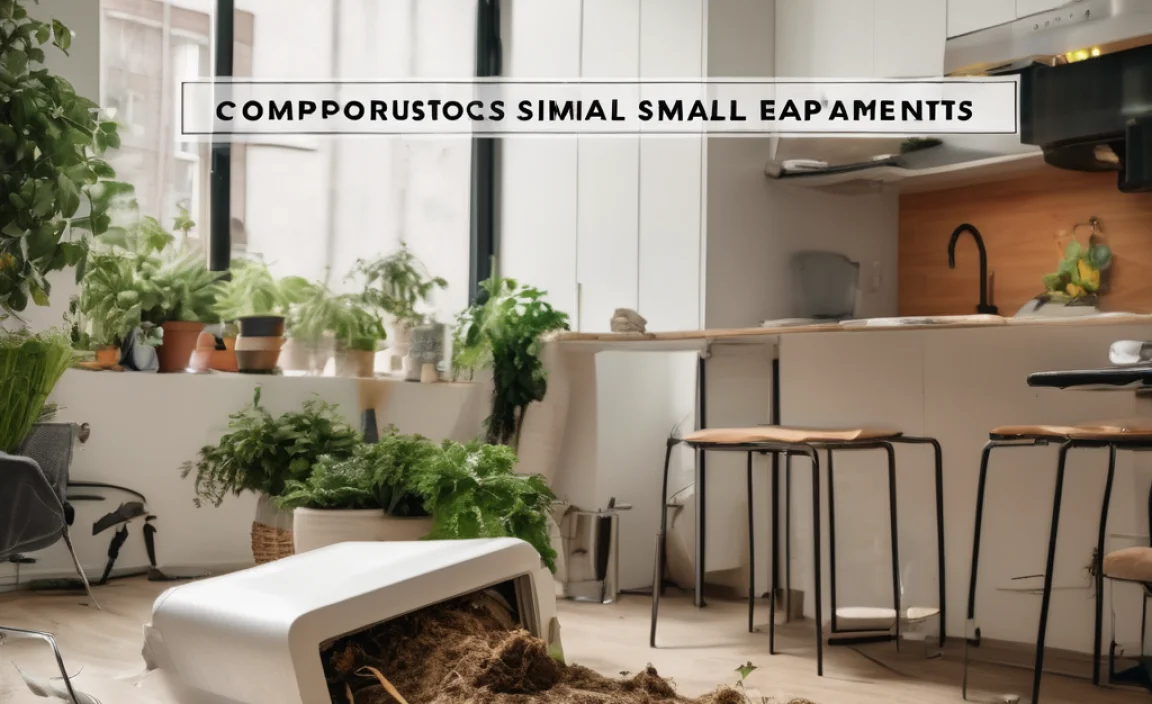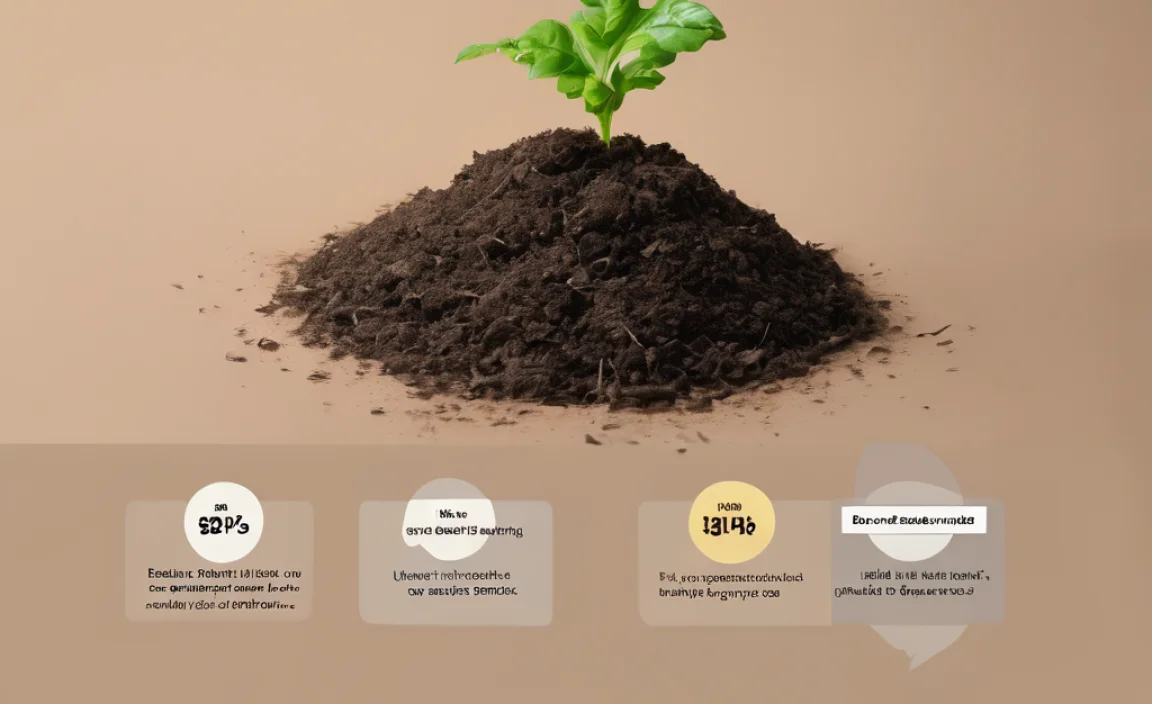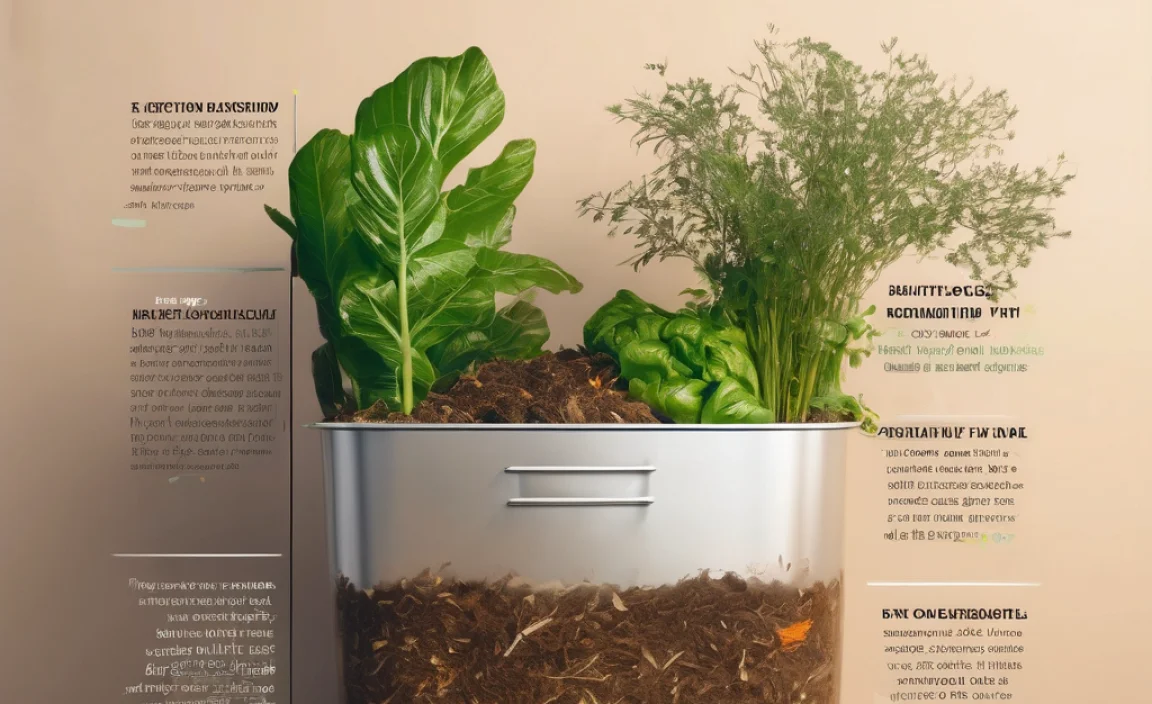Got leftover pasta that’s about to go to waste? Don’t toss it in the trash! Your pasta can actually be a fantastic addition to your compost bin, helping you create nutrient-rich soil for your garden. It might sound a little strange at first, but with a few simple tips, you’ll be a pasta composting pro in no time. Let’s transform that kitchen scrap into garden gold!
Pasta Composting Guide: Essential Tips for Beginners
Hey neighbors! Troy D Harn here, your go-to guy for making your home and garden projects a breeze. Today, we’re tackling something that might surprise you: composting pasta. Yep, those delicious noodles can actually be a super valuable ingredient for your compost pile. I know, I know, you might be thinking, “Can I really compost pasta?” The answer is a resounding YES! And it’s much easier than you think.
We’ve all been there. You cook a little too much pasta, and now you’re staring at a container of leftovers wondering what to do. Before you scrape it into the garbage, let’s talk about how you can give it a second life as “black gold” for your garden. Proper composting diverts waste from landfills and creates amazing fertilizer for your plants. This guide will break down everything you need to know about adding pasta to your compost, making it simple and stress-free.
We’ll cover what kind of pasta is best, how to prepare it, and what to avoid. Plus, I’ll share some of my favorite composting hacks that make the whole process even easier. Ready to turn those pasta scraps into garden treasure? Let’s dig in!
Why Compost Pasta? The Big Picture
Composting is a fantastic way to reduce your household waste. Instead of sending food scraps to the landfill, where they can produce harmful greenhouse gases like methane, composting breaks them down naturally into a rich, dark material called compost. This compost is incredibly beneficial for your garden. It improves soil structure, helps retain moisture, and provides essential nutrients for your plants to thrive. Think of it as a superfood for your soil!
Adding pasta to your compost bin might seem unconventional, but it’s a great source of carbohydrates and nitrogen, both of which are essential “browns” and “greens” for a balanced compost pile. A balanced pile breaks down efficiently and produces high-quality compost. By composting items like pasta, you’re actively participating in a sustainable cycle that benefits your garden and the environment. It’s a win-win!
Understanding Compost Ingredients: Browns vs. Greens
To compost effectively, it’s helpful to understand the two main types of materials that go into your compost bin: “browns” and “greens.” Getting the right mix is key to a healthy, fast-composting pile.
- Browns (Carbon-Rich Materials): These are generally dry and woody. They provide carbon, which is the energy source for the microorganisms that break down your compost. Examples include dry leaves, shredded cardboard, newspaper, twigs, straw, and sawdust.
- Greens (Nitrogen-Rich Materials): These are typically moist and fresh. They provide nitrogen, which helps the microorganisms grow and multiply. Examples include fruit and vegetable scraps, grass clippings, coffee grounds, tea bags, and, yes, cooked pasta!
The ideal ratio for composting is roughly 2-3 parts browns to 1 part greens by volume. This helps prevent your compost from becoming too wet and smelly or too dry and slow. Moderation is key!
Can You Compost Cooked Pasta? Let’s Get Specific!
So, can you just dump that leftover spaghetti and meatballs straight into your compost? Well, almost! Here’s the breakdown on pasta itself:
What Kind of Pasta is Okay?
Generally, most plain, cooked pasta can be composted. This includes:
- Plain spaghetti, fettuccine, penne, macaroni, etc.
- Pasta that has been cooked in water, without any oils or heavy sauces.
What to Be Cautious About
While plain pasta is great, some additions might cause issues:
- Sauce: Creamy sauces, cheesy sauces, or heavily oily sauces can attract pests like rodents and insects. They can also create anaerobic (low-oxygen) conditions, leading to foul odors. If you have pasta with a very light, oil-free tomato sauce, you might be okay, but for beginners, it’s best to stick to plain pasta or scrape off any excess sauce.
- Meat and Dairy: Pasta dishes often come with meat, cheese, or dairy. These items are generally not recommended for home compost piles because they can attract pests, create bad smells, and take a very long time to break down. Many expert composting resources, like those from the U.S. Environmental Protection Agency (EPA), suggest avoiding meat and dairy products in home composting.
- Oils and Fats: Large amounts of oil or butter can coat other materials, preventing them from breaking down and potentially creating a greasy, smelly mess.
The golden rule: If in doubt, leave it out! It’s better to err on the side of caution when you’re starting out.
How to Compost Pasta: Step-by-Step
Ready to start composting your pasta? It’s super simple! Follow these easy steps to ensure your pasta becomes a welcome addition to your compost efforts.
Step 1: Assess Your Pasta Dish
Before you do anything, take a good look at your leftover pasta. Is it plain cooked pasta? Great! Does it have a thick, creamy, or oily sauce? Is there meat or cheese involved? If it’s the latter, it’s best to scrape off as much of the “problematic” stuff as you can. Aim for just the plain noodles.
Step 2: Prepare the Pasta
Larger chunks of pasta will take longer to break down. To speed things up, you can:
- Chop it up: Use a knife or kitchen scissors to cut longer pasta shapes (like spaghetti or fettuccine) into smaller pieces. This increases the surface area for microbes to work on.
- Mix it around: If you have a lot of pasta, it’s good to mix it with other compostable materials. Don’t let it clump together in a big, sticky ball.
Step 3: Add it to Your Compost Bin (The Right Way!)
Here’s where the “browns vs. greens” balance comes in. Pasta is considered a “green” material because it’s rich in nitrogen and moisture.
- Layer it: When you add your pasta to the compost bin, don’t just dump it on top. Try to bury it within a layer of “brown” materials, like dry leaves, shredded newspaper, or cardboard. This helps to cover the moist greens, absorb excess moisture, and prevent any potential odors or pests.
- Mix it in: After adding the pasta and covering it with browns, give your compost pile a good stir or turn with a pitchfork or compost aerator. This ensures the pasta is well integrated and helps aerate the pile, which is crucial for efficient decomposition. Aim for about a shovel-full of browns for every handful of pasta.
Step 4: Monitor Your Compost Pile
Keep an eye on your compost pile. It should be moist like a wrung-out sponge and have a fresh, earthy smell. If it starts to smell sour or ammonia-like, it might be too wet or have too many greens (like your pasta). In this case, add more brown materials and turn the pile to improve aeration. If it seems too dry, you can add a little water.
Step 5: Be Patient!
Composting takes time. Depending on the conditions in your bin, the type of materials you add, and how often you turn it, your compost can be ready anywhere from a few months to a year. Your pasta scraps will eventually break down completely, enriching the compost.
Composting Methods & Pasta Integration
The way you compost can slightly affect how you add pasta. Here’s a look at common methods:
1. Outdoor Compost Bins/Piles
This is the most common method for homeowners with yard space. For larger piles or bins, you have more flexibility. Pasta can be added as described above, buried within layers of yard waste and other kitchen scraps. A larger volume of browns is readily available in these systems.
2. Tumbler Composters
Tumblers are enclosed bins that you can rotate. They often speed up the composting process. When adding pasta to a tumbler, ensure it’s well chopped and mixed thoroughly with other ingredients before tumbling. Overloading with moist “greens” like pasta can make a tumbler heavy and hard to turn. Balance is key!
3. Worm Composting (Vermicomposting)
This method uses earthworms to break down food scraps. While worms can eat pasta, it’s best to add it sparingly and in moderation. Worms can get “gassed” (acclimated to certain conditions) if too much of one food source is given. If you’re vermicomposting, make sure the pasta is plain and well-chopped. Feed it in small amounts, buried in the bedding, and always monitor your worms’ reaction. Resources from WormChoice offer great tips on what worms can and cannot eat.
4. Bokashi Composting
Bokashi is an anaerobic fermentation process that uses a special Bokashi bran inoculant. It can handle all food scraps, including meat, dairy, and oily sauces, which are typically avoided in traditional composting. If you use Bokashi, your cooked pasta with sauce and all can go in! The fermented material then needs to be buried in soil or added to a traditional compost pile to finish decomposing. It’s a fantastic option for dealing with those trickier food scraps.
Pasta Composting: Dos and Don’ts Table
To make things super clear, here’s a quick reference table for composting pasta:
| DO Compost | DO NOT Compost (or use with extreme caution) |
|---|---|
| Plain cooked pasta (spaghetti, penne, etc.) | Pasta with heavy cream sauces, cheese sauces |
| Pasta with very light, oil-free tomato sauce | Pasta dishes with meat, bones, or fish |
| Chopped or broken-up pasta pieces | Pasta dishes with dairy products (milk, yogurt) |
| Pasta mixed well with “brown” materials (leaves, cardboard) | Pasta with large amounts of oil or butter |
| Small, occasional portions in a balanced compost system | Large clumps of pasta that can create soggy spots |
| Pasta in a Bokashi system (fermentation handles it!) | Pasta as the dominant ingredient in a compost pile |
Troubleshooting Common Pasta Composting Issues
Even with the best intentions, you might run into a snag. Here are some common problems and how to fix them:
Issue: My compost smells bad (like rotten eggs or ammonia).
Why it happens: This usually means your compost pile has too much “green” material (nitrogen) and not enough “brown” material (carbon), or it’s too wet and not getting enough air. Pasta, being moist and nitrogen-rich, can contribute to this if not balanced properly.
The Fix:
- Add a generous amount of brown materials (shredded newspaper, cardboard, dry leaves, straw). Aim for a thick layer.
- Turn your compost pile thoroughly with a pitchfork or aerator to introduce oxygen. This is very important!
- If it’s excessively wet, add even more browns to absorb the moisture.
Issue: My compost pile isn’t breaking down, or it’s breaking down very slowly.
Why it happens: This could be because there’s not enough moisture, not enough “green” material, or the pile is too compacted and not aerated. A lack of nitrogen (from greens) means the microbes don’t have enough to eat and reproduce.
The Fix:
- Ensure your compost pile is moist like a wrung-out sponge. If it feels dry, add water while turning the pile.
- Add more nitrogen-rich materials. Small amounts of cooked pasta can help here, but so can fresh grass clippings, fruit scraps, or coffee grounds.
- Turn the pile regularly to introduce air and mix materials.
Issue: I’m seeing fruit flies or other small insects in my compost bin.
Why it happens: These tiny visitors are often attracted to exposed, moist food scraps, especially those with sugars or starches. Cooked pasta, if not properly buried, can be a magnet.
The Fix:
- Always bury your kitchen scraps, including pasta, under a layer of brown materials.
- Ensure your compost pile is not too wet. Adjust with browns if needed.
- Turn your compost pile regularly. This tends to disrupt insect colonies and speeds up decomposition, making the food scraps less available.
- For persistent fruit flies, you can try placing a small jar with apple cider vinegar near the bin (not in it) as a trap.
Issue: My pasta is clumping together and forming a gunk.
Why it happens: Pasta is sticky when wet, and if added in large quantities without being mixed with enough absorbent brown material, it can just form a starchy mass. This impedes air flow and decomposition.
The Fix:
- Chop the pasta into smaller pieces before adding it.
- Mix the pasta thoroughly with a good amount of dry, bulky brown material (like straw or shredded cardboard) before adding it to the pile, or immediately after adding it.
- Turn the pile to ensure the pasta is dispersed and doesn’t sit in clumps.
Tips for Maximizing Your Compost with Pasta
Want to get the most out of your pasta composting efforts? Here are a few pro tips:
- Chop, Chop, Chop: The smaller the pieces of pasta, the faster they will break down. This is a principle of composting: more surface area equals faster decomposition.
- Balance is Beautiful: Remember the browns-to-greens ratio. Pasta is a green. Always have plenty of brown materials on hand to balance it out. Have a bin of dry leaves or shredded cardboard ready to go!
- Location, Location, Location: Make sure your compost bin is in a good spot. Ideally, it should be somewhere that gets some sun (to help heat it up) but isn’t in direct, scorching sun all day (which can dry it out too quickly).
- Turn it Up: Regular turning (aerating) is probably the single most important factor for fast, odor-free composting. Aim to turn your pile at least once a week, or every other week.
- Consider a Compost Thermometer: If you’re serious about speeding up the process, a compost thermometer can help you monitor the internal temperature of your pile. High temperatures (130-160°F or 55-70°C) indicate that the microbes are working efficiently and will kill weed seeds and pathogens. You can find good guides on using them through resources like EarthEasy.com.
- Bokashi First for Tricky Items: If you frequently have pasta with sauces, meat, or dairy, consider a smaller Bokashi bin as a pre-composting step. This ferments everything nicely before it goes into your main compost pile, eliminating odors and pest issues from those items.
Beyond Pasta: What Else Can You Compost?
Once you’re comfortable composting pasta, you’ll realize how many other common kitchen scraps can be composted! Expanding your composting habits means even less waste going to the landfill. Here’s a quick list of other common compostable items:
Common Greens (Nitrogen-Rich):
- Fruit and vegetable scraps
- Coffee grounds and paper filters
- Tea bags (staples removed)
- Grass clippings (in thin layers to avoid matting)
- Plant trimmings (non-diseased)
- Eggshells (crushed)
Common Browns (Carbon-Rich):
- Dry leaves
- Shredded newspaper and plain cardboard (avoid glossy or colored inks if possible)
- Straw, hay, and sawdust (from untreated wood)
- Small twigs and wood chips
- Paper towels and napkins (un

I am passionate about home engineering. I specialize in designing, installing, and maintaining heating, ventilation, and air conditioning systems. My goal is to help people stay comfortable in their homes all year long.



